Welcome to the ultimate buyer’s guide for choosing the right pole for your pole dancing journey. Whether you’re a beginner or an experienced pole dancer, selecting the perfect pole is essential for your practice. In this guide, we will walk you through important factors to consider, from space requirements to types of poles and surface coatings. Get ready to find the ideal pole that suits your needs and helps you excel in pole dancing.
Factors to Consider Before Choosing a Pole
When it comes to buying your own pole for Pole Dancing, there are several important factors to consider. With a wide range of options available on the market, it’s crucial to select a pole that is stable, reliable, and able to support your body weight. To help you make an informed decision, we have prepared a comprehensive guide that takes into account various considerations. Let’s explore what you need to think about before purchasing the ideal pole for your needs.
Space Considerations
Before making a purchase, it’s essential to assess the space where you plan to use the pole. Will you dedicate a room solely for pole dancing? In that case, ensure that there are no obstacles near the pole and that you have at least 2 meters of clear space around it. Additionally, consider whether you can make a hole in the ceiling or the floor (if you choose a permanent pole), as certain rental agreements may restrict modifications. If your ceiling surface is uneven or vaulted, you may need to purchase additional components to ensure a stable installation.
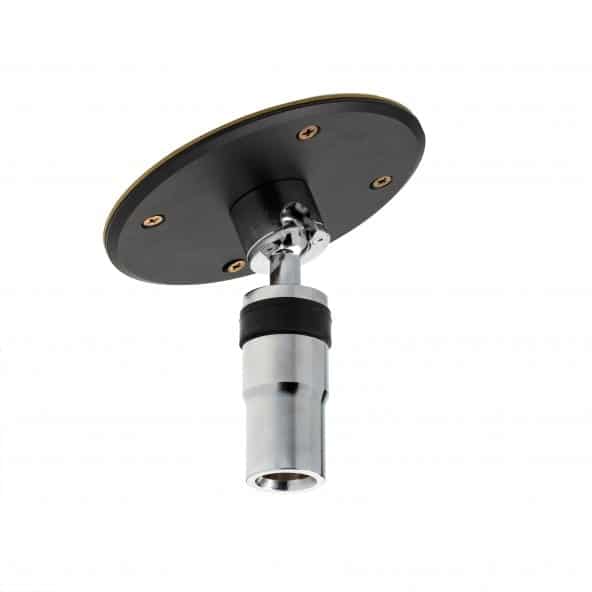
“Lupit Pole Slope Ceiling Mount” is the perfect solution and can be used for any ceiling inclination. Click to buy
Room-Specific Measurements
The height of the room where you will place the pole can vary from room to room. Before making a final decision, take precise measurements from the floor to the ceiling. This will help you determine the correct height of the pole or identify if you need to purchase extensions to achieve the optimal fit.
By carefully considering these factors, you can confidently choose a pole that suits your space requirements, ensuring a safe and enjoyable pole dancing experience.
Exploring Different Types of Poles
When choosing a pole for your pole dancing journey, it’s important to understand the various options available. Here are the three main types of poles to consider:
Permanent Pole
The permanent pole is custom-cut to fit the height of your room and is installed either on the floor or the ceiling. Once installed, it cannot be easily removed. This type of pole is best suited for rooms with heights of 3.5 meters or more, as well as for vaulted ceilings. It is commonly found in dance schools, gyms, houses, and bars.
Removable Pole
The removable pole relies on the pressure created between the pole and the ceiling for support. It requires minimal effort for installation and does not require a ladder. It can be placed on various floor surfaces such as concrete, tiles, or wood. To achieve the desired height, extensions may be needed, which can be purchased separately. Removable poles come in two types: a single-piece pole manufactured according to your room’s size, and a detachable pole that can be disassembled and carried in a backpack. This type of pole is convenient for those who prefer not to make holes in the floor or ceiling and offers portability between different locations.
Free-Standing Pole
A free-standing pole does not require a ceiling for support, making it suitable for outdoor training or rooms with high ceilings. It consists of two pieces joined together and is placed in the centre of a round, flat platform designed for dancing. The platform is made of solid metal with a diameter exceeding 1.5 meters, allowing for freedom of movement. One person can easily install and uninstall the free-standing pole. Keep in mind that practising with a free-standing pole may result in more noticeable oscillation initially, but with time, dancers become accustomed to it. Due to their complex construction, free-standing poles tend to be more expensive than other types.
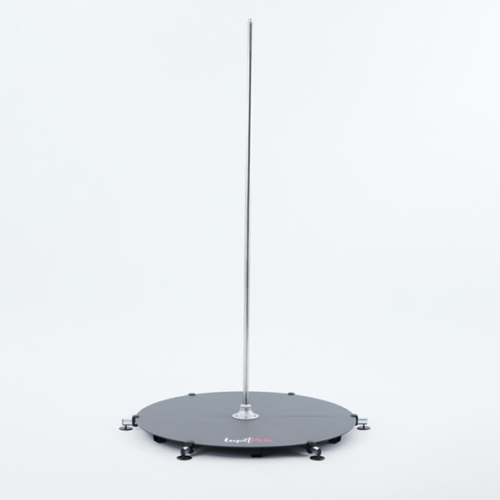
Exclusive Offer: Enjoy a 10% discount on all pole purchases for our valued readers. Use code ‘POLEDISCOUNT10’ at checkout to claim your savings.
By understanding the characteristics and benefits of each type, you can make an informed decision about the pole that best suits your needs and preferences.
Determining the Right Extension for Your Pole
To ensure you select the appropriate extension for your pole, it is essential to measure the height of the room where the pole will be placed. Follow these steps to determine the correct extension:
Measure from the floor to the ceiling
Take a precise measurement of the distance between the floor and the ceiling where the pole will be installed. This measurement will help you determine if you need an extension and, if so, how long it should be.
Compare the measurement with extension requirements
Refer to the specifications provided by the pole manufacturer to identify the extension lengths required based on the height of your room. These guidelines will ensure that you order the correct extension or choose the appropriate combination of extensions.
Select the suitable extension
Based on the comparison between your measurement and the extension requirements, determine the exact extension length or combination needed for your pole. Ensure you order the extension(s) that align with the specific pole model and brand you have chosen.
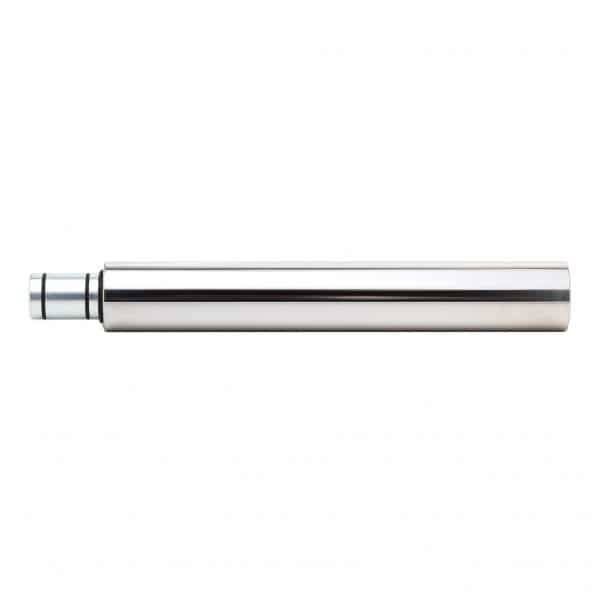
Exclusive Offer: Enjoy a 10% discount on all pole purchases for our valued readers. Use code ‘POLEDISCOUNT10’ at checkout to claim your savings.
By accurately measuring the height of your room and following the manufacturer’s guidelines, you can confidently select the right extension(s) for your pole, ensuring a secure and proper fit during installation.
Choosing the Right Diameter for Your Pole
When selecting a pole, one important factor to consider is the diameter. Different diameters offer varying levels of grip and suitability for different individuals. Here are some common diameter options and their characteristics:
50mm (Historical Reference)
In the early days of pole dancing as a sport, the 50mm diameter was the standard size. While it was widely used at that time, it is important to note that this size is no longer commonly available in the market. We mention it here for informative historical reasons, as it played a significant role in the development of pole dancing as we know it today.
45mm
The 45mm diameter is the most commonly used size in many dancing schools and competitions. Its surface provides sufficient grip to perform leg grips comfortably without making hand moves challenging. It strikes a good balance between grip and manoeuvrability, making it a versatile choice for most pole dancers.
42mm
This diameter provides additional options for individuals to find the diameter that suits their preferences and requirements.
40mm
If you have smaller palms, you may find the 40mm diameter more convenient as it is easier to grasp. However, it may limit advanced leg grips due to its smaller size. Consider this diameter if you prioritize a secure grip and have petite hands.
Determining the Right Diameter
If you are unsure which diameter is right for you, especially if you are new to pole dancing, we recommend visiting a pole dancing school. By checking out the poles and seeking guidance from experts, you can assess the sizes based on your palm size and familiarity with pole dance. This hands-on approach will help you make an informed decision and choose the diameter that best suits your needs.
Remember, the right diameter plays a crucial role in your pole dancing experience, ensuring a comfortable grip and facilitating your progress and enjoyment in this dynamic art form.
Choosing Between Spinning and Static Poles
When it comes to selecting a pole, another important consideration is whether you prefer a spinning or static pole. Here’s a breakdown of the characteristics of each type:
Static Pole
The static pole does not rotate and remains steady during your pole dancing routine. It is an ideal choice for beginners and those who are taking their first steps in pole dancing. Additionally, static poles are generally more affordable compared to spinning poles. Choosing a static pole allows you to focus on building your strength, learning foundational moves, and developing proper technique without the added challenge of rotation.
Spinning Pole
On the other hand, the spinning pole can rotate freely, adding a dynamic element to your pole dancing practice. When you execute moves on a spinning pole, the centrifugal force pushes your body away from the pole, requiring more strength and effort to maintain a grip. The spinning pole offers a unique challenge and opens up possibilities for advanced choreographies and fluid, dynamic movements. One of the advantages of a spinning pole is that it can also be adjusted to function as a static pole, providing flexibility according to your preference and skill level.
Which Option to Choose
If you are a beginner or still in the early stages of your pole dancing journey, opting for a static pole is recommended. It allows you to focus on building a solid foundation, improving your strength and technique without the added complexity of a spinning pole. Mastering fundamental moves and building confidence on a static pole will set you up for success as you progress in your pole dancing practice.
On the other hand, if you have reached an advanced level and are comfortable with basic pole dancing techniques, exploring the spinning mode can add a new dimension to your routines. Spinning poles challenge your strength, balance, and control as you work with the rotational forces. It enables you to execute advanced choreographies that incorporate spins, dynamic transitions, and intricate tricks.
Ultimately, the choice between spinning and static poles depends on your skill level, preferences, and goals as a pole dancer. Consider your current abilities, desired challenges, and the type of routines you aspire to perform when making your decision. Both spinning and static poles offer unique benefits and can enhance your pole dancing experience in different ways.
Our Advice: Invest in a Pole with Both Spinning and Static Functions
Based on our experience and expertise, we highly recommend considering a pole that offers both spinning and static functions. Having the versatility to switch between the two modes provides you with the best of both worlds and allows you to adapt your practice to different styles, preferences, and skill levels.
Investing in a pole that offers spinning and static functions eliminates the need to choose between the two options. You can start with the static mode when you’re a beginner, focusing on building strength, learning foundational moves, and perfecting your technique. As you progress and gain confidence, you can switch to the spinning mode to explore dynamic spins, fluid transitions, and advanced choreographies.
The ability to switch between spinning and static modes provides endless possibilities for creativity and growth in your pole dancing journey. It allows you to challenge yourself, improve your skills, and keep your practice exciting and engaging. Whether you’re training at home or in a studio, having a versatile pole will enhance your training experience and expand your repertoire of moves and routines.
Remember, choosing the right pole is essential for your safety and enjoyment. Prioritize high-quality poles that are sturdy, durable, and designed specifically for pole dancing. Take the time to research reputable brands, read customer reviews, and consult with experts or instructors in pole dancing schools for their recommendations.
Surface Coating – Materials
When choosing a pole, one important consideration is the material used to cover its surface. It’s essential to keep in mind that different individuals may have varying reactions to different materials, and climate conditions can also impact their performance. Let’s take a look at the available options and the information we have gathered for you.
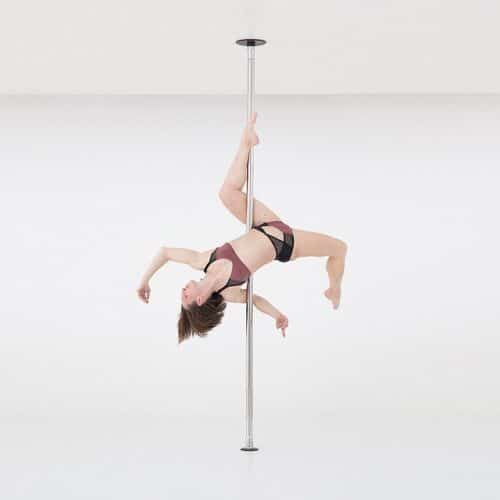
Exclusive Offer: Enjoy a 10% discount on all pole purchases for our valued readers. Use code ‘POLEDISCOUNT10’ at checkout to claim your savings.
Stainless Steel:
Pros:
- Stainless steel poles are known for their durability and longevity.
- Stainless steel is generally resistant to rust and corrosion.
Cons:
- In certain climates or for individuals with sweaty hands, stainless steel may become slippery.
- It takes more time for the material to heat and in order to have a better grip you should spend some time touching it before you start the main practice.
- If your hands tend to get sweaty or if you live in an area with high levels of humidity, this material is not suitable for you.
Chrome
Pros
- Chrome is preferable to other materials and it emulates the texture of stainless steel.
- It is considered to offer a better grip in comparison with stainless steel but, in reality, its grip depends on the body’s composure.
- It’s cheaper than other types of poles.
Cons
Chrome coating may wear off over time, resulting in reduced grip.
Some individuals may experience skin irritation or allergies to nickel, which is present in chrome plating.
Brass
Pros
- Brass offers the best grip from the rest of the materials and therefore, it is more suitable for people with sweaty palms.
- With proper maintenance, brass can endure tarnishing and last for many years.
Cons
- Brass requires regular cleaning and maintenance to prevent tarnishing.
- Make sure you can really make good use of this material otherwise, it is likely that you will end up with an extremely sticky pole which can be quite painful!
- Brass consists of a mixture of copper and zinc which makes it softer and thus, more sensitive.
- Also, it should be cleaned more often.
Titanium Gold
Pros
- Titanium Gold poles feature a gold-coloured coating that enhances grip.
- They provide a compromise between the strong grip of brass and the smoother grip of chrome.
- The titanium coating adds durability and longevity to the pole.
Cons
- Maybe the gold colouring wears off but it does NOT affect the finish of the pole and it does NOT mean that the titanium layer has been stripped off. It only means that the extremely thin layer of titanium that was colored gold, has been worn away.
Silicone
Pros
- Silicone-coated poles offer an exceptional grip, especially for individuals with sweaty hands.
- The soft and tacky surface allows for a secure hold and prevents slipping.
- Silicone poles can be used with clothing, eliminating the need for additional grip aids.
- You can clean the silicone pole with just rubbing alcohol.
Cons
- Silicone coating cannot be removed, limiting customization options.
- The poles tend to be heavier, potentially increasing shipping costs.
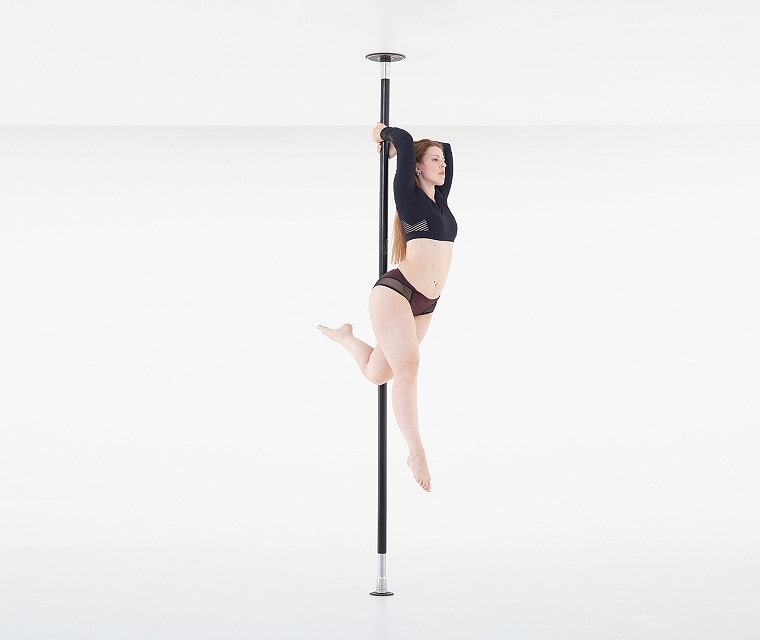
Exclusive Offer: Enjoy a 10% discount on all pole purchases for our valued readers. Use code ‘POLEDISCOUNT10’ at checkout to claim your savings. Click on the image to buy
Powder Coat
Pros
- Powder coating is usually used to create a hard finish that is tougher than conventional paint.
- They are coming in different colours.
- Wash these poles with soapy water and/or spray for glass and a clean rag. No alcohol for these.
- They offer enhanced grip and friction, aiding in advanced moves and tricks.
- The powder coating provides a durable finish that resists chipping and wear.
Cons
- The increased grip may make spins more challenging in static mode.
- The poles can feel stickier, requiring additional strength to execute certain moves.
When starting your pole dancing journey, it’s normal to find it difficult to train and hold onto the pole for extended periods. As your muscles strengthen and you gain more experience, you will improve your grip and overall performance.
Regarding climate changes, utilizing air conditioning, radiators, or dehumidifiers can help maintain a comfortable body temperature during your practice. Additionally, grip aids can be used if necessary to enhance your grip on the pole.
Remember to consult with reputable pole manufacturers and instructors for the latest information on surface coating materials. They can provide specific recommendations based on your individual needs, preferences, and the latest advancements in the industry.
Standard Lock vs. Quick Lock: Which is Right for You?
When choosing a pole, you’ll encounter two primary types of locking mechanisms: the standard lock and the quick lock. Understanding the differences between these locks can help you make an informed decision based on your preferences and needs.
Standard Lock
The standard lock, also known as a hex key lock, is a traditional locking mechanism found on many poles. It utilizes hex keys (also known as Allen keys) to change between spinning and static modes.
Quick Lock
The quick lock mechanism simplifies the transition between static mode and spin mode. With the LUPIT G2 quick lock system, you can easily switch between these modes by turning the lock ring on the lower bearing system to lock or unlock the pole.
Recommended Usage
The quick lock is an excellent choice for those who value convenience, easy adjustments, and the option to switch between static and spinning modes. Ultimately, the choice between a standard lock and a quick lock depends on your specific preferences, needs, and skill level. Consider factors such as stability, ease of use, adjustability, and your desired pole functionality to determine which locking mechanism is the best fit for you.
Upgrade to Quick Lock: Enhance Your Existing Pole
If you already have a pole with a standard lock mechanism and wish to experience the convenience of the quick lock system, you’re in luck! You can easily upgrade your existing pole by purchasing a Quick Lock Set.
Remember, whatever locking mechanism you choose, always follow the manufacturer’s instructions for proper installation and usage to ensure your safety and enjoyment while pole dancing.
Cost
The cost of every pole depends on the type that you will choose to buy, its coating, the height and the rest of the factors mentioned above. Additional costs will be added for shipping.
Great news for our readers! As a special offer, we are providing an exclusive 10% discount on all pole purchases. Simply use the code “POLEDISCOUNT10” at checkout to redeem your 10% savings. Start exploring our wide range of poles and elevate your pole dancing experience today!
Epilogue
You’ve reached the end of our comprehensive buyer’s guide to choosing the right pole for your pole dancing needs. We hope this guide has provided valuable insights and helped you make an informed decision. Remember, selecting a high-quality pole that suits your space, preferences, and skill level is crucial for a safe and enjoyable pole dancing experience. Now, it’s time to embark on your pole dancing journey and unleash your inner dancer with confidence and grace.








